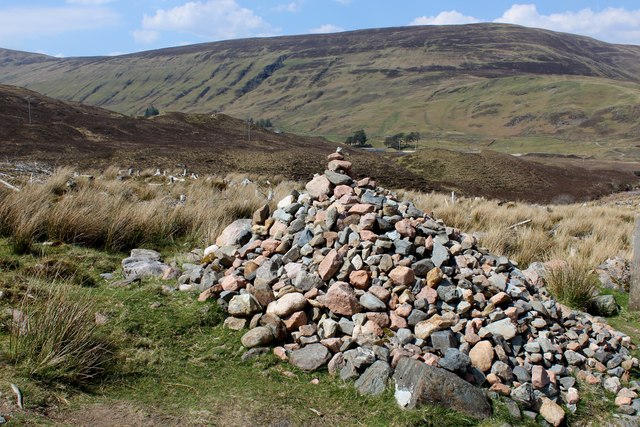History of the Stewarts | Battles and Historic Events
If you are a Stewart Society Member please login above to view all of the items in this section. If you want general information on how to research your ancestors and some helpful links - please look in background information.
If you have a specific question you can contact our archivist.
The Battle of Inverlochy 1645

© Copyright Chris Heaton and licensed for reuse under this Creative Commons Licence.
On 14 January 1645, having sacked Inverary, the seat of the Campbells of Argyll, the Royalist forces left Inverary and headed north. Montrose probably split his army at Glen Etive sending part of it up past Ballachulish while the bulk continued across Rannoch Moor, into Glencoe.
At Glencoe the army crossed the high passes into Glen Nevis, moved around the north slopes of Ben Nevis, going round Inverlochy Castle, and then continued up the Great Glen, arriving at Kilcummin to re-supply. Montroses´ army was dwindling as his Highlanders continued to head home leaving him with about 1,500 men. He was aware that a Covenanter army under the command of the Earl of Seaforth was waiting to confront him at Inverness. Montrose was also aware that Argyll, with a force of 3,000 men, was pursuing him and was only thirty miles behind at Inverlochy. What followed was one of the greatest flanking marches in Scottish history across some of the toughest. most exposed and wildest terrain in Scotland. Instead of marching back down the glen, Montrose decided to surprise Argyll and marched south through the mountains around Ben Nevis to mount a surprise attack.
The Montrose army spent a very cold night in the open on the side of Ben Nevis. Argyll was aware that a small force was operating in the area, he did not know however that it was the entire royal army. Just before dawn on 2 February 1645, Argyll and his covenanters were dismayed at the sight that lay before them, as far as they had been aware Montrose should have been 30 miles north.
Argyll did not stay for the battle, but instead he left the command of his army to his general, Duncan Campbell of Auchinbreck, and retired to his galley anchored on Loch Linnhe. Auchinbreck lined up the covenanters in front of Inverlochy castle, which he reinforced with 200 musketeers to protect his left flank. In the centre he placed the Campbells of Argyll and put the lowland militias on the flanks. Unlike at Tippermuir and Aberdeen, where Montrose had defeated easily hastily conscripted and poorly trained militias, the troops he faced at Inverlochy were veterans of the war in England. Montrose lined his army up in only two lines deep to avoid being out flanked, placing his 600 highlanders in the centre with the Irish on the flanks, the right being commanded by MacColla. The fight did not start straight away and instead skirmishes broke out along the line. This is probably because Auchinbreck and his officers thought that they were only fighting one of Montrose´s lieutenants and not the man himself, believing he was still far up the glen. Just before first light, the Royalists launched their attack.
The Irish clashed with the lowlanders on both flanks and routed them while the Highlanders closed with the Campbells in the centre. The Campbells broke, but their retreat to the castle was blocked by the Royalist reserve cavalry under the command of Sir Thomas Ogilvie. Auchinbreck was shot in the thigh while trying to rally his men and died shortly afterwards. The remaining Covenanters briefly rallied around their standard, then broke and ran, trying to reach Lochaber. The small garrison in Inverlochy castle surrendered without a fight. Over 1,500 Covenanter troops died, while Montrose may have only lost 250 men, the most notable being Sir Thomas Ogilvie who was killed by a stray bullet.
Montrose, through his lieutenant, MacColla, who commanded the 2,000 Irish troops sent by the Irish Confederate, was able to use this conflict to rally Clan Donald against Clan Campbell. In many respects, the Battle of Inverlochy can be seen as part of the clan war between these two,

